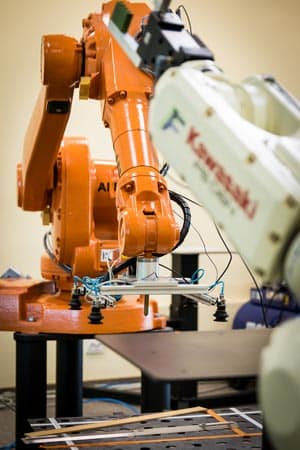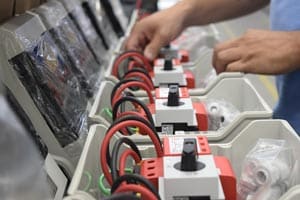There is no doubt that hard and flexible automation processes have changed the nature of manufacturing. Smart factories now account for $500 billion in the global economy with that number rising each year. The benefits are many – automation streamlines equipment and processes, with greater efficiency and quality. From increased productivity, output, accuracy and safety of production lines to creating new areas of expertise in design, operations, installations and maintenance of automated machinery, robotics and equipment, automation is essential for a company’s success.
There are a number of automation benefits for manufacturers. Advances in automation technology has opened up greater capabilities for manufacturers. Automation is not limited to simply high-volume production environments. In today’s smart factories, automation is used for high-volume and low-volume, high-mix production. Varying types of automation processes can serve a wide range of production requirements for manufacturers. Production requirements will, in fact, determine whether a hard or fixed automation process, or a flexible automation process, is better-suited for a company’s production goals. Here is the basic differences between the two:
Hard Automation

In manufacturing, hard automation, also referred to as fixed automation, is a production system where machinery, robots, and industrial equipment is allocated to perform singular tasks. Fixed automation systems typically are organized to combine a number of simple operations to fulfill high-production needs. The equipment is designed and purpose-built to carry out one set of operations as part of a whole process. Once in place, hard automation systems can be used in mass production systems as well as continuous flow systems. The operation easily outperforms human output, producing products at high speeds with high levels of efficiency to meet the most challenging high-production goals.
Fundamentally a straight-forward production method, the integration of a fixed automation system is nonetheless a complex set of operations composed of many coordinated sequences. Though hard automation systems require high initial investment to design and engineer the equipment, in high volume production facilities, demand will amortize the cost in a relatively short period of time.
Manufacturers investing and implementing a hard automation system would do so to produce a singular high-volume, low variability part or component. Each segment of a hard or fixed automation system is designed to perform a specific, highly repetitive task. Once the production system is in place it is too cost-prohibitive and time-consuming to modify. They are found in automated assembly processes, web handling and converting systems, chemical manufacturing processes, paint and coating processes, material conveyor systems and transfer lines.
Flexible Automation

To accommodate high variability output of products, parts, and components, manufacturers should invest in a flexible automation system. As the name suggests, flexible automation is a highly adaptable manufacturing system designed to easily change production lines. The automated processes that control machinery, robots, or equipment are operated by computerized systems programmed and operated by trained personnel utilizing computer coding or HMIs (Human Machine Interfaces). The system can even be programmed to produce multiple product types simultaneously.
In flexible automation processes and systems then, human operators issue instructions to multiple machine tools connected to sophisticated material-handling systems. Nearly all aspects of production are typically performed via robotic automation controlled from a central computer. With such product design flexibility, manufacturers can offer made-to-order designs for clients to customize products. Flexible automation systems perform batch processes for companies to produce a variety of products in low-to-medium production runs. There is no downtime in production between batches and changeover is accomplished by computer programming.
Look for flexible automation solutions where production requirements are continually changing or developing in high and low volume production environments. Flexible automation systems are best-suited for material handling, assembly, and robotic systems that can adjust and adapt to production demand requirements.
Machine Vision Integrators